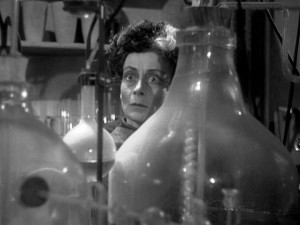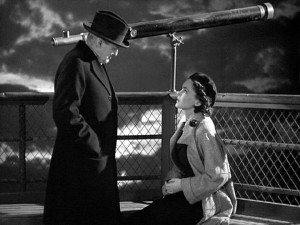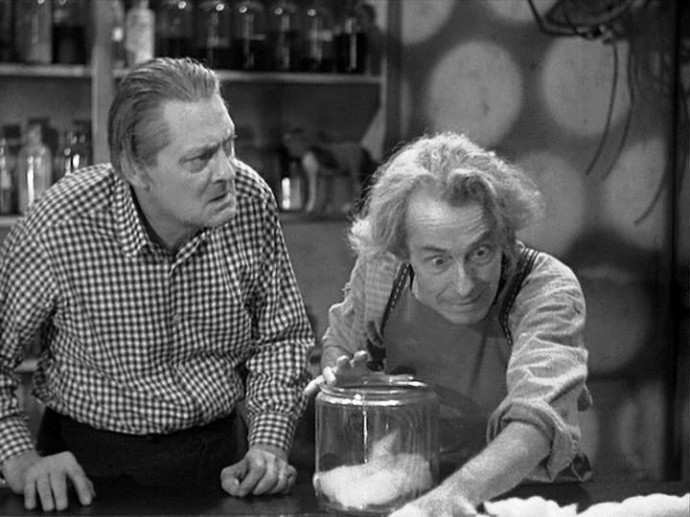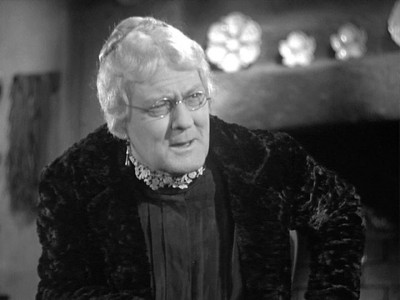
It’s Christmas at the Thursday Horror Picture Show, and it’s also Christmas in Tod Browning’s final horror film, The Devil Doll (1936). Though it might not be the climax to Browning’s distinctive career in the genre one might have wished, it’s certainly a worthwhile film. The film was adapted from A. Merritt’s 1932 novel Burn Witch Burn! (not to be confused with the American retitling of the 1962 British film Night of the Eagle, which had nothing to do with Merritt’s book and was, in fact, based on Fritz Leiber’s novel Conjure Wife). Presumably, the change was made because the film dropped both the witch and the witchcraft angle in favor of a rather loopy science-fiction premise. That the film had nothing to do with the devil either seems to have bothered no one. Lionel Barrymore plays Paul Lavond, a man wrongfully imprisoned on Devil’s Island. He escapes with another inmate, Marcel (Henry B. Walthall), a crazy scientist who has developed a machine for shrinking people and animals. (This is apparently thought to be a way to defeat famine, though no one ever explains how how doll-sized folks are going to farm full-sized crops.) The problem is that the subjects are then left in a cataleptic state unless energized by thought control from the inventor.

When Marcel expires, Lavond does what any sensible person would—dress in drag (to pose as toymaker Madame Mandilip), take the machine—and Marcel’s spectacularly unstable widow (Rafaela Ottiano)—to Paris, and get his revenge on the men who framed him and clear his name. This can all be accomplished with doll people, you see. Yeah, it’s screwy, but it’s also a fun horror film with special effects that hold up surprisingly well.
Probably the most astonishing thing about The Devil-Doll is that that venerable scenery-chewing ham Lionel Barrymore is either amazingly restrained, or else he just appears that way up against the rather startling theatrics of Henry B.Walthall’s over-the-top mad scientist and even more the wild-eyed antics of Rafaella Ottiano as Walthall’s even crazier wife. Just when you think the woman cannot possibly come up with a more insane, more bug-eyed expression, she does. Old Lionel simply didn’t stand a chance against her—which makes hers a performance of some note.

In all fairness to Barrymore, he actually does play most of the film in subdued manner—well, as subdued as it’s possible to be when you’re spending most of the picture dragged up and talking in a hardly credible high-pitched voice. The final scene with his daughter (Maureen O’Sullivan) actually quite touching. That scene itself is a little unusual—especially for code-era 1936. The production code definitely and strictly forbade the use of suicide as a plot resolution. Maybe it was the fact that the implicit act was going to occur after the final fade-out—or maybe the censor boys just didn’t get it.

Taken from the standpoint of a Browning picture, it’s a little bit of a letdown. It has moments of undeniable atmosphere—most notably the scene when one of the “doll people” is willed into action from his position as an ornament on a Christmas tree. (Actually, the Christmas angle is a little on the bitter side altogether. It’s only mentioned in connection with merchandising, or the police inspector’s memorable complaint that the streets are full of religious fanatics at this time of year.) But compared with his other horror pictures, it’s a bit tame. The plot is partly reworked from Browning’s silent film The Unholy Three (1925), which also concerned a fugitive from justice disguised as an old lady and running a shop as a front. That, however, was a wilder proposition and included a gorilla. The inclusion of a gorilla might have jazzed things up a bit, but I’m not complaining too much.




Now that my internet service has been restored, let’s hear it for Henry B. Walthall (The Little Colonel) in his final complete film appearance.
Well, he went out out-acting Lionel!
When Marcel expires, Lavond does what any sensible person wouldЧdress in drag (to pose as toymaker Madame Mandilip), take the machineЧand MarcelТs spectacularly unstable widow (Rafaela Ottiano)Чto Paris, and get his revenge on the men who framed him and clear his name. .
Just saw this on TCM. It’s worth seeing just for Rafaela, who manages to steal every scene from John Barrymore, himself no stranger to over-the-topness. The first part is delightfully loopy. Alas, this loopiness peters out and by the end it’s just a sort of crime/reconciliation drama. Still I found it difficult to take my eyes off of Barrymore in “old lady drag”.
Oops, my bad. That’s Lionel Barrymore.
Never underestimate the power of Rafaela Ottiano!
It’s too bad that they wrote out Henry B.Walthall when they did. But I quess that having those 3 scenery-chewers together for almost 90 minutes was more than the crew or an audience would be able to take.
At least one of the three would likely have burst a blood vessel, too.